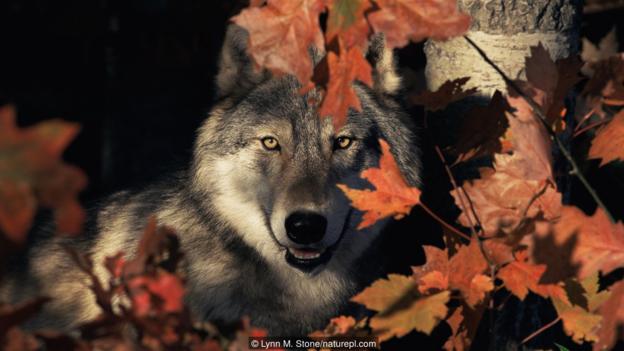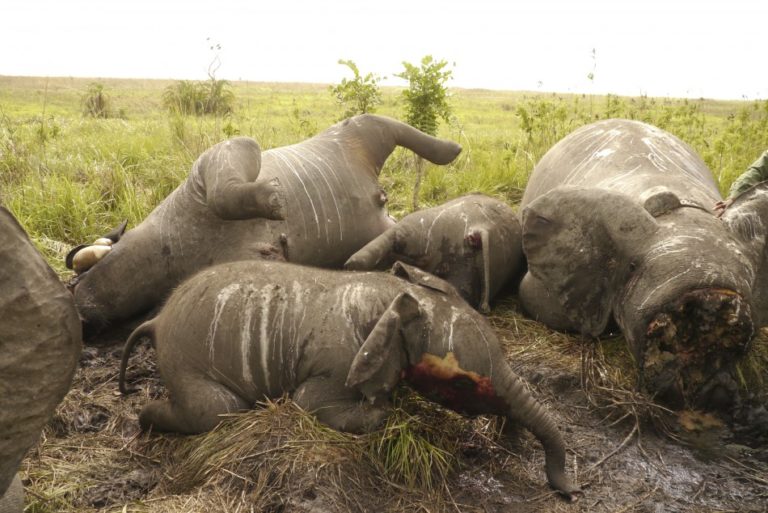The US sometimes allows the killing of wolves, on the grounds that it can help conservation, but in fact there is a surprising knock-on effect By Nikki Rust 11 May 2016
(Cover Picture-A grey wolf (Canis lupus) (Credit: Lynn M. Stone/naturepl.com)
As the cold early spring sun began to shine between the trees, the only sound heard for miles around was the gentle rustling of leaves in the bone-chilling breeze. But faintly, in the distance, the galloping of footsteps began to thunder through the forest.
The wolf pack darted between the conifers on the trail of a deer. Suddenly, a deafening explosion echoed through the woods, and a wolf at the rear of the pack yelped and dropped to the floor. A poacher had shot it dead.
Such illegal killings are thought to be relatively common in the US. However, because poaching is illegal, we do not have a firm grasp on how often this illicit behaviour really goes on.
Conservationists have previously thought that poaching subsides if either legal culling by government officials, ortrophy hunting, is allowed. The idea is that these legal forms of killing can make local people more tolerant of the wildlife they live with, reducing their urge to illegally kill animals.
However, until now nobody has ever tested this assumption.
Guillaume Chapron of the Swedish University of Agricultural Sciences and Adrian Treves of the University of Wisconsin-Madison decided to find out whether legal killing really does reduce poaching.
They looked at 12 changes in wolf protection laws in Wisconsin and Michigan between 1995 and 2012, and tracked how the wolf population was affected.
The idea is that these legal forms of killing can make local people more tolerant of the wildlife they live with
During this timeframe, there were six periods when the law completely protected wolves, and six periods in which the government could legally cull them. Culling was used to eliminate wolves suspected of attacking livestock or that were perceived as threats to human safety, even though there is no record of a human ever being attacked by a wild wolf in Wisconsin or Michigan.
They found that, while the wolf population did continue to grow throughout the study, when culling was allowed the growth was slowed by one-third.
The decrease in population growth could not have been solely due to the legal killing, because the number of wolves culled was included in their calculations. They also excluded other factors, such as wolves leaving the area. That left poaching as the only explanation for the reduction in growth.
Their findings have been published in the journal Proceedings of the Royal Society B.
Wolves sometimes prey on livestock (Credit: Bryan and Cherry Alexander/naturepl.com)
The idea that “allowing hunting will increase tolerance and consequently decrease poaching” is “one of the most widespread assumptions in large carnivore management,” saysJosé Vicente López-Bao of Oviedo University in Spain. “However, these authors show the opposite.”
Treves offers a possible explanation. “If poachers see the government killing a protected species, they may say to themselves, ‘well I can do that too’,” he says.
Wolves are quite adaptable to humans. The question is whether humans are adaptable to wolves
In other words, allowing culling may send a signal to the public that killing wolves is acceptable, or that anti-poaching laws will not be enforced.
Chapron contends that “hunting of large carnivores in general, including trophy hunting, has problems with trust and the invalid or corrupted justification it is based on”.
Concerns over hunting are not new. In 2015 there was an outcry over the illegal killing of Cecil the lion in Zimbabwe, which caused a widespread push to get trophy hunting banned. The new study further questions the supposed conservation value of legally killing animals.
Chapron and Treves believe that it is a mistake to allow legal culling of wolves, if the intention is to make local people more tolerant of them. In fact, a 2014 study found evidence that people’s attitudes towards wolves became more negative when culling was legalised, which suggests that culling is not the answer.
A wolf pack hunting bison (Credit: Chadden Hunter/naturepl.com)
To combat the decline in wildlife caused by poaching, Chapron feels that we need to focus more on enforcing the law. “You do not reduce looting by allowing shop-lifting, but instead by having zero tolerance,” he says.
If poachers see the government killing a protected species, they may say to themselves, ‘well I can do that too’
As human populations continue to grow and we expand further into wilderness areas, we will have to find better ways to coexist with wildlife: particularly those that threaten our livelihoods or even our lives.
Chapron feels that the problem, and therefore solution, lies with us. “Wolves are quite adaptable to humans,” he says. “The question is whether humans are adaptable to wolves.”
Whilst killing an animal perceived as a threat may seem like an easy solution, it may not prove the most effective in the long-term. In fact, a study published in 2014 suggested that wolf culls can backfire in the short term by increasing the frequency of wolves killing livestock.
“Our results undermine the justifications used to kill wildlife,” says Treves. “Therefore, more broadly, predator control as a government policy needs to be scrutinised.”








